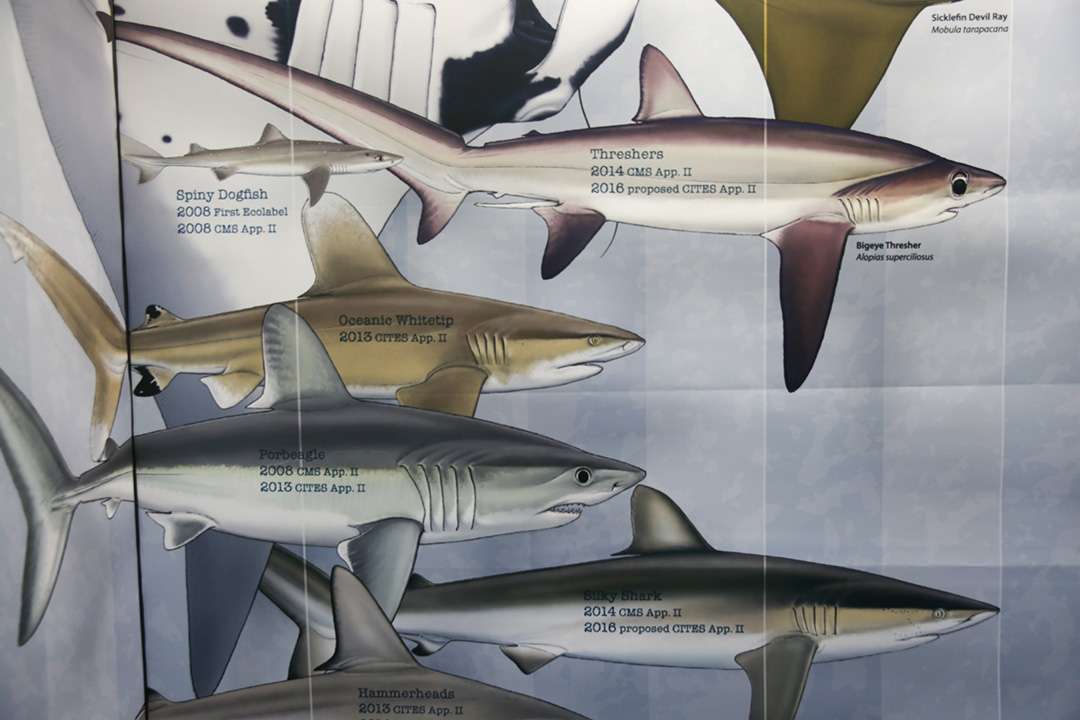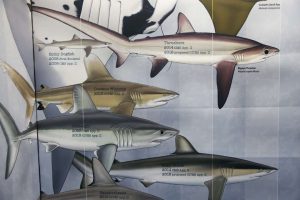Globally, shark populations are threatened by a long and difficult list of challenges. They include over-fishing, fisheries by-catch, illegal trade, habitat destruction, depletion of prey, pollution, boat strikes and climate change – according to the Convention on the Conservation of Migratory Species of Wild Animals (CMS). These obstacles – formidable on their own – are compounded by the pelagic nature of many sharks. They range beyond any one country’s borders or jurisdiction.
In this context and amid declining populations, almost a decade ago, countries came together to do something about it. A big step was taken on 1 March 2010, in Manila, the Philippines – when range States signed into effect the CMS Memorandum of Understanding (MoU) on the Conservation of Migratory Sharks. This was the first dedicated global instrument focused on safeguarding pelagic sharks. Its establishment set in motion a series of important policy steps that would raise awareness and the stakes for sharks conservation well into the future.
The first event was a meeting of the MoU signatories in 2012. With funding provided under the European Union Thematic Programme for Environment and Sustainable Management of Natural Resources including Energy (ENRTP), the First Meeting of the Signatories (MOS 1) to the MoU convened in 2012. Its major outcome was the adoption of a Global Conservation Plan for the seven sharks species listed (at that time) under the MOU. The Plan aimed to catalyze global and regional initiatives to reduce threats to migratory sharks and to maintain their favorable conservation status based on the best available scientific information.
The Plan was based on five objectives: improving the understanding of migratory shark populations through research, monitoring and information exchange; ensuring that directed and non-directed fisheries for sharks were sustainable; ensuring, to the extent practicable, the protection of critical habitats and migratory corridors and critical life stages of sharks; increased public awareness of threats to sharks and their habitats, and enhanced public participation in conservation activities; and enhanced national, regional and international cooperation.
2014 shaped up to be an important year for shark conservation, catalyzed in part by the successful beginnings of the MoU.
Two years later, 2014 would shape up to be an incredibly important year for shark conservation, catalyzed in part by the successful beginnings of the MoU and Conservation Plan.
First, progress was made, also with ENTRP support, towards the implementation of the Plan, particularly to prevent wildlife trafficking in sharks in the Middle East and North Africa Region. Three workshops were organized to inform fisheries officers, custom officers and coast guards about legal requirements and guidelines regarding the conservation of sharks under various Conventions and relevant Regional Fisheries Management Organizations (RFMOs). These meetings were held in Yemen, Egypt and the United Arab Emirates, and they exemplified the kind of outreach needed for the MoU to gain traction. Through these meetings, Arab countries came together to combat illegal international trade and looked for ways to collaborate under the framework of MoU. By the time these meetings concluded in 2014, the MoU’s membership had grown by 33%, with nine Arab countries joining.
Second, recognition of the MoU went beyond range State countries all the way to the UN General Assembly (UNGA). In a 2014 resolution, the UNGA welcomed a FAO review of the International Plan of Action for the Conservation and Management of Sharks, and affirmed the importance of the Sharks MoU (See A/RES/67/79).
Finally and also in 2014, the eleventh meeting of the Conference of the Parties to the CMS (COP 11) convened in November. Of the thirty-one approved proposals to add species to the Convention’s two appendices, a record 21 shark, ray and sawfish species were added, as proposed by Kenya, Egypt, the European Union, Fiji, Costa Rica and Ecuador and leading the Conference to be nicknamed the “Sharks COP.” These listings were made as the International Union for Conservation of Nature (IUCN) Shark Specialist Group (SSG) released the results of the first-ever global analysis showing that a quarter of the world’s sharks and rays were threatened with extinction.
The work of the MoU was timely and gaining momentum. By 2016, as the Second Meeting of the Signatories (MOS 2) convened, MoU membership had grown to 40 countries. At this meeting in San Jose, Costa Rica, from 15-19 February 2016, these Signatory States added 22 additional shark and ray species to Annex I of the MoU. They also created a Conservation Working Group.
Signatory States have now gathered for their third meeting, which is taking place from 10-14 December 2018, in Monaco. With 29 species now listed under the MoU, well beyond the seven species when it originally commenced, these States will discuss progress on the Action Plan and the agreement. It will also be an opportunity to harness momentum for the MoU, which has enabled collaboration on the conservation of sharks at a time when challenges to the ocean and all its inhabitants are growing.
******
This article draws on results and documentation of projects carried out with funding by the European Union.

